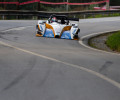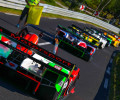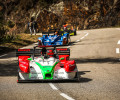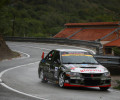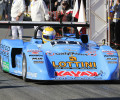Stepping up to the challenge of Ecce Homo
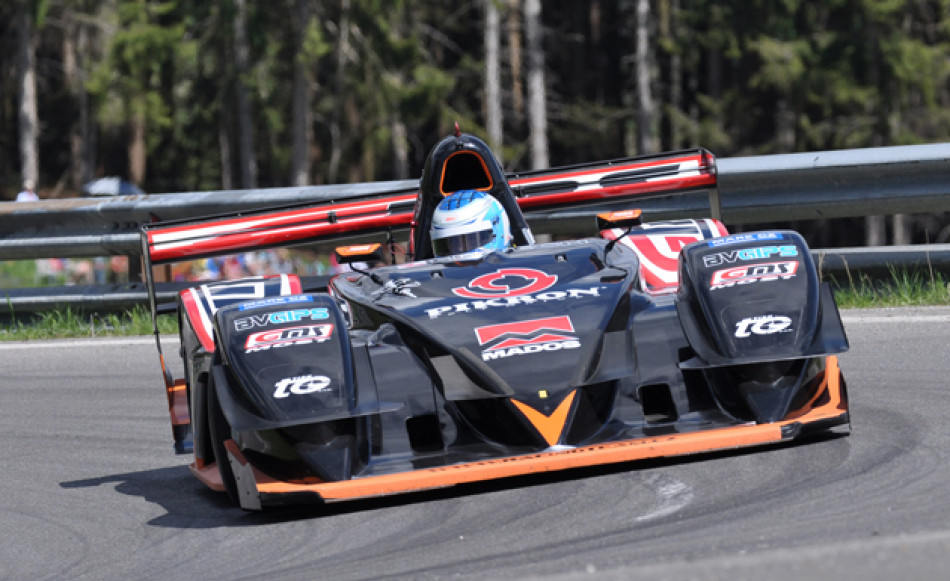
Ecce Homo is not just a great classic in the FIA European Hill-Climb Championship. It is also one of the oldest events in the history of motor sport and one of those rare time-honoured meetings still going on today, and what’s more as an entirely sporting event. The first edition of Ecce Homo dates back to 1905.
Starting from the small town of Sternberk, which is totally focussed on its race throughout the weekend, the 7.8 km road is quite unusual in that it offers two different aspects: the first half of the course is winding, narrow, steep and almost closed in by woodland; moving into the second half, the road is wider, faster and open to the elements.
Ecce Homo is the fifth round of the 2013 FIA European Hill-Climb Championship. It does not come as a great surprise that five-time European Champion, Simone Faggioli, has won all four rounds so far. The Italian is well known as the current master of hill-climb. However, the competition is tougher than ever. Admittedly, the weather conditions in Spain two weeks ago were difficult, due to the road being merely damp at times and waterlogged at others, but for once Faggioli could sense his closest rival right behind him. With a race time of over five and a half minutes, he won by only a tiny margin of two tenths of a second. The performance of runner-up Julien Ducommun had all the makings of a true achievement for him. As well as being the young Swiss driver’s first time racing on the Spanish course, it was only his second time competing behind the wheel of an Osella FA30 similar to Faggioli’s.
Ducommun will be in the line-up at Ecce Homo, alongside his compatriots Marcel Steiner and Joël Volluz. While Steiner knows the event, having come second in 2012, Volluz and Ducommun will first have to familiarise themselves with the course, a situation they will have to resign themselves to for the duration of the season, except in August, when they will compete in “their” Swiss event, at Saint Ursanne.
Like Faggioli and the three Swiss drivers, Czech Milos Benes is also armed with the Osella FA30. Ecstatic to be competing at home this weekend, he could pose the most serious threat to Faggioli.
Although not in a position to aim for victory in the general classification, except in the event of exceptional or changing weather conditions, Otakar Kramsky, Vaclav Janik and Laszlo Szasz will strive to achieve the best performance among the Formula 3000s, whereas Dusan Neveril, Petr Vitek and Fausto Bormolini will be looking to win in the E2-SC category for two-seater prototypes. Coming first in a category is worth as many points as an overall win, so the E2-SC drivers can hope for an honourable classification in the Championship. The provisional second place of Italian Bormolini is the perfect example of this.

As for the category 1 closed cars, Group N is slightly ahead of Group A. Croat Tomislav Muhvic is in the lead in the provisional Championship classification, but only slightly ahead of Czech Jiri Los. Dominika Benesova is doing very well in equal third place with the leader of Group A, Lukas Vojacek.
Ecce Homo is also on the programme of the FIA Historic Hill-Climb Championship and will have a field of 38 cars, including the Osella PA5 of Faggioli Sr, the Formula 2 March 712M of Martin Vondrak, the Chevron B23 of Jaroslav Prasek and the mighty March-Audi CanAm of Adam Klus.
To consult the list of entries for Ecce Homo, click here.

 Facebook
Facebook Twitter
Twitter